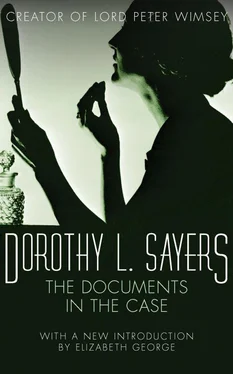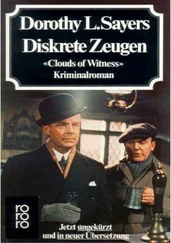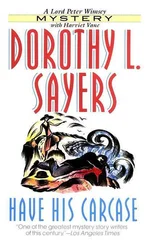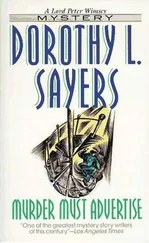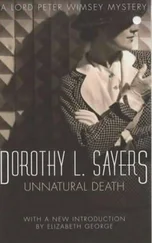Dorothy Sayers - The Documents in the Case
Здесь есть возможность читать онлайн «Dorothy Sayers - The Documents in the Case» весь текст электронной книги совершенно бесплатно (целиком полную версию без сокращений). В некоторых случаях можно слушать аудио, скачать через торрент в формате fb2 и присутствует краткое содержание. Жанр: Классический детектив, на английском языке. Описание произведения, (предисловие) а так же отзывы посетителей доступны на портале библиотеки ЛибКат.
- Название:The Documents in the Case
- Автор:
- Жанр:
- Год:неизвестен
- ISBN:нет данных
- Рейтинг книги:5 / 5. Голосов: 1
-
Избранное:Добавить в избранное
- Отзывы:
-
Ваша оценка:
- 100
- 1
- 2
- 3
- 4
- 5
The Documents in the Case: краткое содержание, описание и аннотация
Предлагаем к чтению аннотацию, описание, краткое содержание или предисловие (зависит от того, что написал сам автор книги «The Documents in the Case»). Если вы не нашли необходимую информацию о книге — напишите в комментариях, мы постараемся отыскать её.
The Documents in the Case — читать онлайн бесплатно полную книгу (весь текст) целиком
Ниже представлен текст книги, разбитый по страницам. Система сохранения места последней прочитанной страницы, позволяет с удобством читать онлайн бесплатно книгу «The Documents in the Case», без необходимости каждый раз заново искать на чём Вы остановились. Поставьте закладку, и сможете в любой момент перейти на страницу, на которой закончили чтение.
Интервал:
Закладка:
‘Yes; but the intermediate stages are not inevitable in detail, only overwhelmingly probable in the gross. There, Perry, if you like, you can reconcile Foreknowledge with Freewill.’
‘Life, then, I suppose, is but one more element of randomness,’ said I, ‘in the randomness of things.’
‘Presumably,’ said Hoskyns.
There was a pause.
‘What is Life?’ I asked, suddenly.
‘Well, Pontius,’ said Waters, ‘if we could answer that question we should probably not need to ask the others. At present — chemically speaking — the nearest definition I can produce is that it is a kind of bias — a lop-sidedness, so to speak. Possibly that accounts for its oddness.’
‘I’ve said that kind of thing myself,’ I said, rather astonished, just as a sort of feeble witticism. Have I hit on something true by accident?’
‘More or less. That is to say, it is true that, up to the present, it is only living substance that has found the trick of transforming a symmetric, optically active compound into a single asymmetric, optically active compound. At the moment that Life appeared on this planet something happened to the molecular structure of things. They got a twist which nobody has ever succeeded in reproducing mechanically — at least, not without an exercise of deliberate selective intelligence, which is also, as I suppose you’ll allow, a manifestation of Life.’
‘Thank you,’ said Perry. ‘Do you mind saying the first part over again, in words that a child could understand?’
‘Well, it’s like this,’ said Waters. ‘When the planet cooled, the molecules of that original inorganic planetary matter were symmetric — if crystallised, the crystals were symmetric also. That is, they were alike on both sides, like a geometrical cube, and their reversed or mirror-images would be identical with themselves. Substances of this kind are said to be optically inactive; that is to say, if viewed through the polariscope, they have no power to rotate the beam of polarised light.’
‘We will take your word for it,’ said Perry.
‘Oh, well, that’s quite simple. Ordinarily speaking, the vibrations in the aether — need I explain aether?’
‘I wish you could,’ said Hoskyns.
‘We will pass aether,’ said Perry.
‘Thank you. Well, ordinarily the aetheric vibrations which propagate the light takes place in all directions at right angles to the path of the ray. If you pass the ray through a crystal of Iceland spar, these vibrations are all brought into one plane, like a flat ribbon. That is what is called a beam of polarised light. Very well, then. If you pass this polarised light through a substance whose molecular structure is symmetric, nothing happens to it; the substance is optically inactive. But if you pass it through, say, a solution of cane sugar, the beam of polarised light will be twisted, and you will get a spiral effect, like twisting a strip of paper either to the right or to the left. The cane sugar is optically active. And why? Because its molecular structure is asymmetric. The crystals of sugar are not fully developed. There is an irregularity on one side, and the crystal and its mirror image are reversed, like my right hand and my left.’ He laid the palm of the right hand on the back of the left to show his meaning. We all frowned and practised on our own hands.
‘Very good,’ continued Waters. ‘Now, we can produce in the laboratory, by synthesis from inorganic substances, other substances which were at one time thought to be only the products of living tissues — camphor, for instance, and some of the alkaloids used in medicine. But what is the difference between our process and that of Nature? What happens is this. The substance produced by synthesis always appears in what is called a racemic form. It consists of two sets of substances — one set having its asymmetry right-handed and the other left-handed, so that the product as a whole behaves like an inorganic, symmetric compound; that is, its two asymmetries cancel one another out, and the product is optically inactive and has no power to rotate the beam of polarised light. To get a substance exactly equivalent to the natural product, we have to split it into its two asymmetric forms. We can’t do that mechanically. We can do it by the exercise of our living intelligence, of course, by laboriously picking out the crystals. Or we can do it by swallowing the substance when our bodies will absorb and digest the dextro-rotating form, of, for example, glucose, and pass the laevo-rotating form out unchanged. Or we can get a living fungus to do it for us, such as blue mould, which will feed on and destroy the dextro-rotatory half of the racemic form of paratartaric acid and leave unchanged the laevo-rotatory half, which is the artificial, laboratory-made half. But we can’t, by one mechanical laboratory process, turn an inorganic, inactive, symmetric compound into one single, asymmetric, optically active compound — and that is what living matter will do cheerfully, day by day.’
Waters finished his exposition with a smart little thump of the fist on the table. I knew what that was. It was the postman’s knock, bringing the answer to that letter of mine. A horrid sinking feeling at the solar plexus warned me that in a very few minutes I should have to ask a question. Why need I do it? The subject was remote and difficult. I could easily pretend not to understand. If there really was a difference between the synthetic and the natural product, it was not my business to investigate it. Waters was changing the subject. He had gone back to the first day of creation. Hang him! Let him stay there!
‘So that, as Professor Japp said, as long ago as 1898, “The phenomena of stereo-chemistry support the doctrine of vitalism as revived by the younger physiologists, and point to the existence of a directive force, which enters upon the scene with Life itself and which, in no way violating the laws of the kinetics of atoms” — that ought to comfort you, Hoskyns — “determines the course of their operation within the living organism. That is that at the moment when Life first arose, a directive force came into play — a force of precisely the same character as that which enables the intelligent operator, by the exercise of his will, to select one crystallised enantiomorph and reject its asymmetric opposite.” I learnt that passage by heart once, as a safeguard against cocksureness and a gesture of proper humility in face of my subject.’
‘In other words,’ said Matthews, ‘you believe in miracles, and something appearing out of nowhere. I am sorry to find you on the side of the angels.’
‘It depends what you mean by miracles. I think there is an intelligence behind it all. Else, why anything at all?’
‘You have Jeans on your side anyway,’ put in Hoskyns. ‘He says, “Everything points with overwhelming force to a definite event, or series of events, of creation at some time or times, not infinitely remote. The universe cannot have originated by chance out of its present ingredients.” I can’t tell you what produced the fast molecules of gas, and you can’t tell me what produced the first asymmetric molecules of Life. The parson here may think he knows.’
‘I don’t know,’ said Perry, ‘but I give it a name. I call it God. You don’t know what the aether is, but you give it a name, and deduce its attributes from its behaviour. Why shouldn’t I do likewise? You people are making it all very much easier for me.’
It was no good. I had to ask my question. I burst in violently, inappropriately, on this theological discussion:
‘You mean to tell me,’ I said, ‘that it is possible to differentiate a substance produced synthetically in the laboratory from one produced by living tissue?’
‘Certainly,’ said Waters, turning to me in some surprise, but apparently accepting my tardy realisation of this truth as mere vagary of my slow and unscientific wits. ‘So long, of course, as the artificial substance remains in the first or racemic form, for this would be optically inactive, while that from the living tissues would rotate the beam of polarised light, when viewed in the polariscope. If, however, that racemic form had been already split up by the intelligent operator, or some other living agency, into its two dextro-and laevo-rotary forms, it would be impossible, to distinguish between them.’
Читать дальшеИнтервал:
Закладка:
Похожие книги на «The Documents in the Case»
Представляем Вашему вниманию похожие книги на «The Documents in the Case» списком для выбора. Мы отобрали схожую по названию и смыслу литературу в надежде предоставить читателям больше вариантов отыскать новые, интересные, ещё непрочитанные произведения.
Обсуждение, отзывы о книге «The Documents in the Case» и просто собственные мнения читателей. Оставьте ваши комментарии, напишите, что Вы думаете о произведении, его смысле или главных героях. Укажите что конкретно понравилось, а что нет, и почему Вы так считаете.
